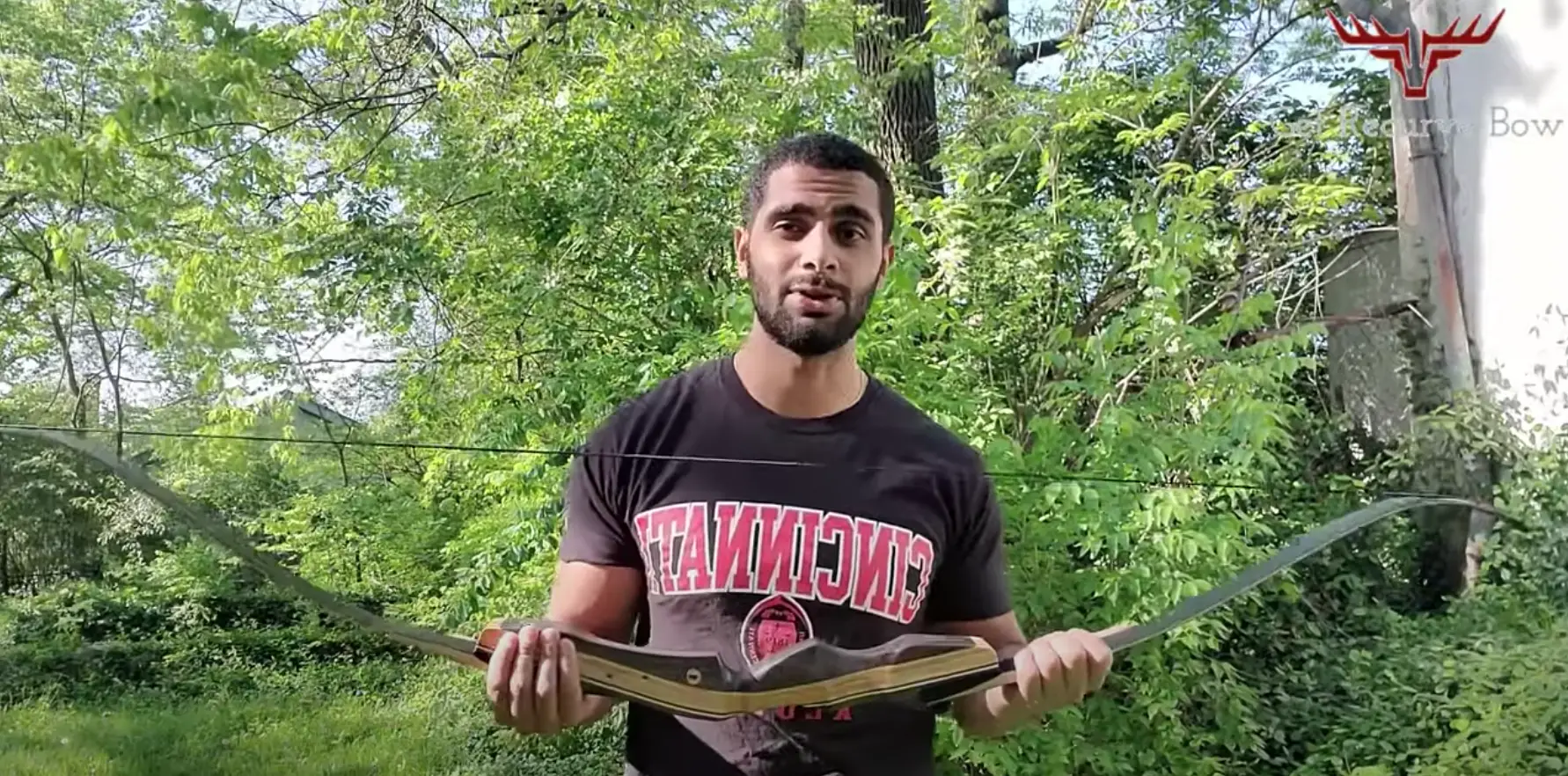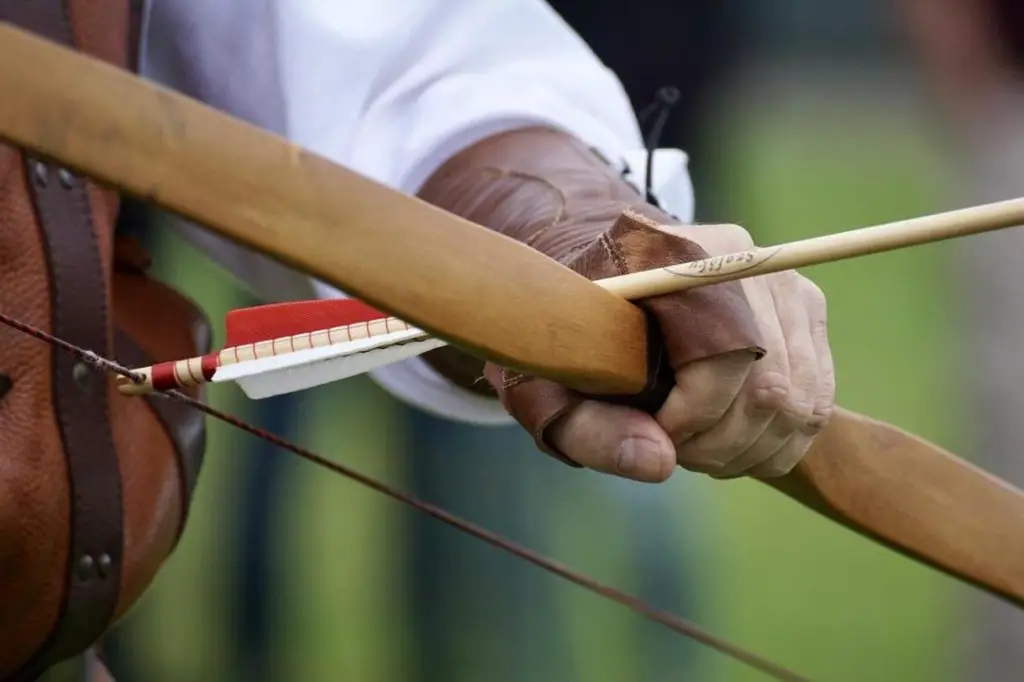Every bowhunter knows that there are two keys to success: a reliable weapon and silence. While a recurve bow is one of the most highly recommended type of weapon, as it shoots straight and fast arrows, thus allowing for more precise, accurate shots, there is a major downside: it can be quite loud.
As the strings are pulled and the arrow is launched, a recurve bow makes a loud banging sound, which can startle your deer, elk, moose, or whatever other types of game you’re targeting and lead to a lot of missed shots, as your prey is more than likely to escape before your arrow makes contact.
Fortunately, there are ways that you can make a recurve bow quieter. Below, you’ll find out some handy tips that you can use to silence your weapon and increase the success of your bow hunting trips.

What Makes Recurve Bows So Loud?
Before we jump in and explain how to silence your recurve bow, it’s important to understand what makes these weapons so loud. When you understand the reasons why a recurve bow is loud, you can then determine how to correct the problem and improve your success. So, what contributes to the noise a recurve bow makes? Let’s take a look.
- Loose components. If any of the components of your recurve bow are loose, it’s pretty much guaranteed that it’s going to make noise. That’s because loose parts can lead to vibration, and that vibration will make loud sounds when it’s released. While any part can become loose, two of the most common components culprits include the sights and stabilizer. The sight helps to increase the chances of hitting your target; however, if it becomes loose, this element can cause vibrations and enhance the sound of the snap of your bow. The stabilizer, as the name suggests, stabilizes your bow when you take a shot, and the weights attached to it balance it out; however, if the weights on your stabilizer are loose, not only will it fail to function properly, but it will also cause vibrations, which will increase the sound of your shot.
- Improper brace height. The right brace height can be equated to tuning a guitar; if the brace height isn’t set up according to the manufacturer’s guidelines, it can increase the sound of your bow. If your recurve bow is making too much noise, make sure to check the brace height and adjust it, if necessary.
- Improper string length. The strings become entwined so that they can properly sit in the grooves of the bow. If the strings aren’t properly sized – they’re too short or too long – they can cause problems that will contribute to the loudness of your bow. For example, if the strings are too short, they can separate themselves from the groove and limb, which can result in noise; if the strings haven’t been wound together enough times, they may be too long and can choke up the groove, thus creating noise.
- Improperly balanced tiller. The tiller on a recurve bow refers to the difference between the upper limb to string stands and the lower limb to string distance. If the tiller is unbalanced, additional vibration and shock can result, which will increase the amount of noise heard upon release. For example:
- Negative tiller. This happens when there is a closer distance between the top limb from the string than the bottom limb from the string.
- Positive tiller. When there’s a greater distance between the top limb from the string than the bottom limb from the string. This is pretty common with modern bows.
- Neutral tiller. When there’s a zero difference between the top and bottom limb from the string, both are totally equal, thus causing a neutral tiller.
- Runaway bowstring strand. While this is the least common problem, it’s still one that all hunters who use a recurve bow should be aware of, as it can lead to serious vibrations and loud sounds. A runaway strand occurs when there are loose strands that aren’t spun tight enough within the entwined strings. Take a look at your strings; if they resemble a braid with a piece of hair sticking out, then you have a runaway bowstring strand.

Tips to Silence a Recurve Bow
While there’s no way to completely silence a recurve bow, as it will always make some degree of noise, there are ways that you can make it quieter. Here’s a look at some of the most effective ways to do so.
- Use a dampener. This is the most common way to correct a loud recurve bow. A dampener minimizes the vibrations and shock to the arm of the bow, which, in turn, will minimize the sound. There are a few types of dampeners, including:
- Riser. Putting a dampener on the riser can reduce the amount of vibration and noise the riser makes when you release an arrow.
- Limb. Placing a dampener on the limb will not only limit the amount of noise but can also reduce the amount of fatigue and pain you experience in your arm when you’re shooting.
- Stringer. There are several types of string silencers to choose from, and all are placed directly on the string to reduce the noise level.
- Groove silencer. There are groove silencers for all types of bows, including ones that are specifically made for recurve bows. Usually made of leather, these silencers are placed right on the limbs. It should be noted, however, that while they minimize the slapping noise that recurve bows can make, silencers do not minimize vibrations.
- Use the appropriate arrows. If you’re using the wrong arrows, a recurve bow can generate a lot of noise; particularly if the arrows are too light, as it will distribute too much energy and vibrations along with the bow, which will damage the bow on the arm.
- Tuning. Tuning a bow can be likened to tuning a guitar. When your bow is in tune, it will make less noise. In order to tune your bow, simply adjust the nocking point location and the brace height.
Conclusion
There are several factors that can cause a recurve bow to make an excessive amount of noise. By inspecting your bow for the above-mentioned issues and using the tips we’ve provided, you can minimize the level of noise that your recurve bow will make and improve your success.

Archery is my hobby & I usually hunt and play on weekends and after work. It’s a passion since I was very young and I love writing about it as well to continuously learn more and share the love of archery with others!



